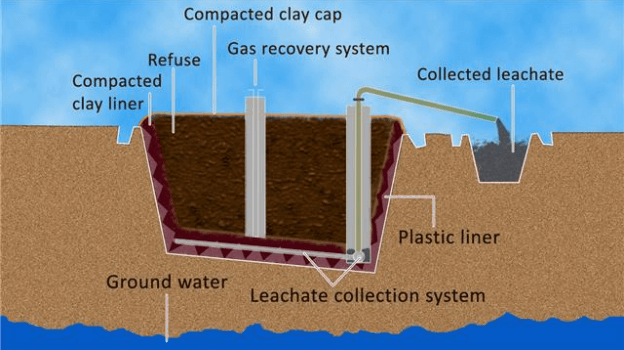
We should segregate the waste into the bio-degradable and non-biodegradable right at the source. Therefore, some measures have to be taken immediately for solid waste management.
Open Dump
When piles of waste materials or garbage get accumulated or are dumped at certain places by accident or by design, they are referred to as Ground Dumps. Open dumps created either by any civic body or residential society are illegal
Such dumps have a negative effect on the environment. All open ground dumps of solid waste release toxic materials in the air and underground water. This gives rise to health and safety concerns. Due to such dumping, the location becomes a breeding ground of mosquitoes, harbouring diseases, inviting animals, unpleasant and unbearable odours etc. It also affects the quality of the soil and water and poses a great risk to public health.

Delhi and Mumbai have burnt their hands by creating dumping grounds which have now become dumping Hills ranging in height up to 40 M and above. This situation is prevailing in the entire National Capital Region. Because of pressure, temperature and the presence of biodegradable material in the waste, the waste dumps produce Methane which is inflammable. Hence frequent fire in the waste dumps is becoming unmanageable. To add insult to the injury, the open dumps attract the rag pickers which over a period of time become rag pickers colony and then everyone in this colony suffers from some of the other ailments owing to the toxic atmosphere and brazen pollution.
Sanitary Landfill
Let us create a number of “Sanitary landfills”- big ditches in series in the useless barren LMC grounds of Urban Civic Bodies; fill these ditches with waste, cover them with mud on the top, compact them slightly and repeat the exercise every day. This is done for the elimination of unpleasant odour and also for expediting the process of rioting i.e decomposition of waste.
Once the landfill site is saturated, plant grass and shrubs thereafter. In course of time, the sanitary landfills become a green patch. Not a single inch of ground is wasted this way.
Sanitary Landfill Sites

The minus point with sanitary landfills is the probability of seepage going down to the groundwater table and contaminating the water with heavy metals like Chromium, Zinc and Arsenic. Since the level of Under Ground Water Table has already gone down to about 300 ft below the ground because of unrestricted extraction of water, such a situation is almost unlikely particularly in National Capital Region and, in general, everywhere in the Country. In any case, this eventuality exists even for Dumping Grounds. There is another disadvantage of Sanitary Landfills in terms of the explosion of methane gas from within. Precautions have to be taken for it either by removing the methane gas by design or by keeping the landfill site inhabitants.
In sanitary landfills, we require a heavy roller to consolidate the waste and cover it up either by soil extracted from the adjacent ditch or by some polythene sheet. We require two to three trained tradesmen at the site for this purpose. The width of the ditch can be about 13 ft. The length and depth of the ditch will be according to the quantity of the solid waste.
Ideal sanitary landfills with bottom and side liners, arrangements for gas recovery and the provision of collection of leachate (seeped water from the wet biodegradable material), if any.
Conclusion
In essence, daily solid waste needs to be slightly consolidated and covered up with soil or polythene. There will be no foul smell or unruly site. Sanitary Landfills are being created for solid waste management in foreign countries since last more than 50 years and at a few places even in India.
Although Landfills have their own drawbacks, and new alternatives are being searched for, but they are certainly better than the ground dumps or dumping hills of solid waste.

